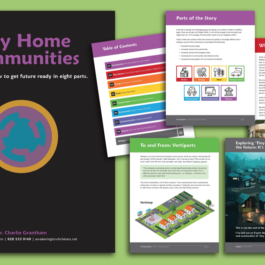What are the top 10 trends for the next ten years? Download the report here.
Over 90% of executives say that “strategic thinking” is the most important part of their job. Most don’t make time to do it.
This is a paradox, and our new research sheds light on the issue.
For the last few months, we’ve had a short survey in the field asking leaders how they spend their time. Although our sample size is too small to generalize, here’s what we know so far:
Everyone (95%) considers it part of their job to think strategically. This shouldn’t surprise us: the people in our networks who have taken this survey are CEOs and leaders who are expected to develop and execute strategic plans.
But then the data gets more interesting.
Over two-thirds of respondents (68%) admit that immediate, tactical issues take up the largest share of their reading for work.
Only 17% spend most of their time learning about changes in their industry and 7% on emerging issues beyond their industry.
In rank order, respondents’ most time is spent as follows:
Task-focused, e.g., email, agendas, prep for the next meeting (68%)
Industry-focused, e.g., industry news and insights. (17%)
Professional development to improve my performance or effectiveness (7%)
Emerging issues outside my industry that could impact my industry or organization (7%)
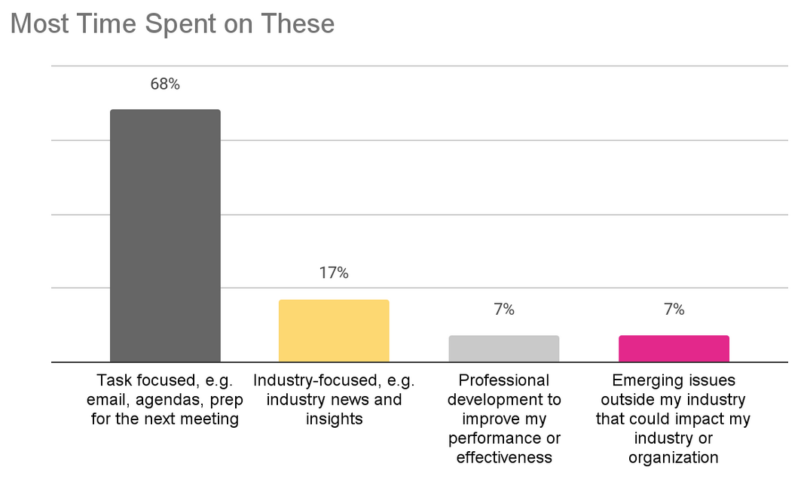
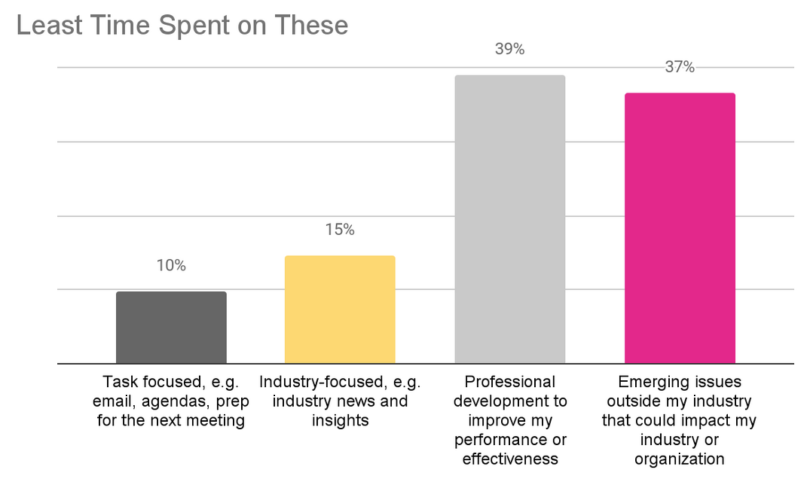
Over three-fourths of respondents (76%) spend 90 minutes or less per month talking to their teams about long-term (beyond 2025) issues. FYI: spending 30-90 minutes per month equates to 1.5-4.5 minutes per day.
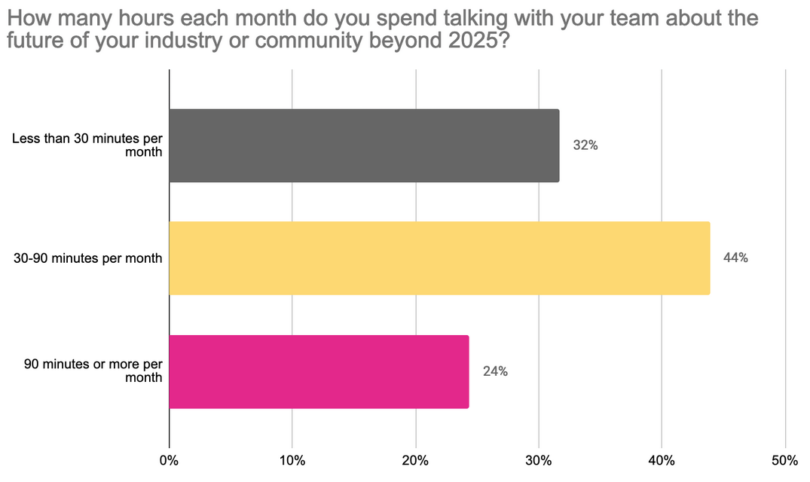
- What would respondents give up to have more time for futures-focused work? Meetings (61%), Emails (46%), and Commuting (32%).
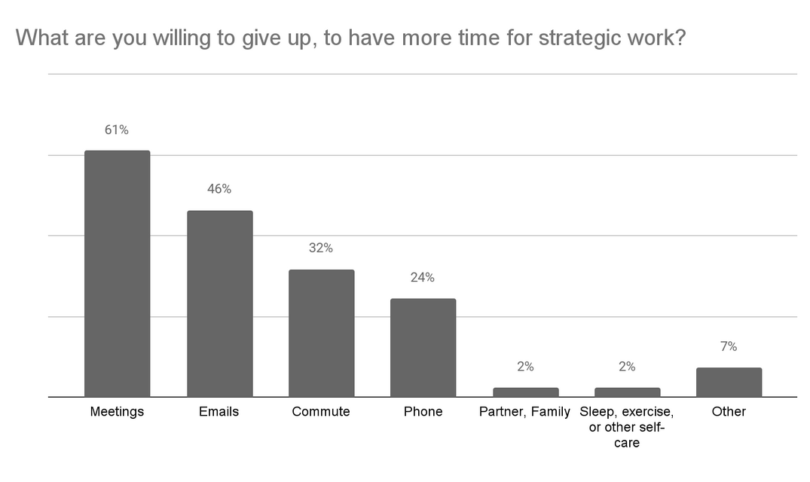
This is the strategy paradox: those who are paid to think strategically do it for only 1.5 to 4.5 minutes per day. Is it any wonder that we’re caught flat-footed when things change?
So what?
What would have to change - within you or your organization - to give leaders more time to think strategically about the future? Here are some techniques popular with our team.
Greg McKeown’s Essentialism - to focus on the “vital few” and do less, better.
Cal Newport’s Deep Work - to make time for what really matters; and A World Without Email - to consider systems and work cultures that enable deep work.
One hour each week for Signals and Sensemaking with a small team. This will help you develop a futurist’s mindset and flex your foresight muscles.
What about you?
Find out how you rank compared to others by taking the survey.
Let us know what techniques you use to make time for strategy.
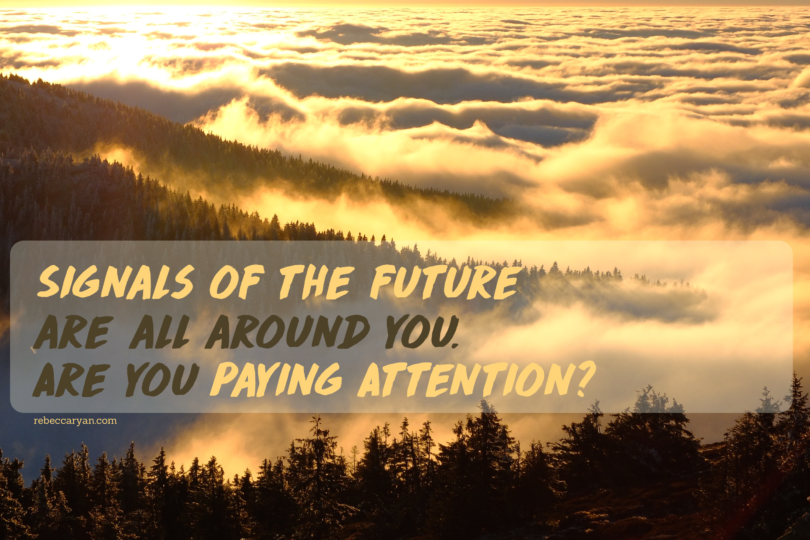
If you enjoyed this post, please subscribe to our newsletter.

Rebecca Ryan, APF
Rebecca Ryan captains the ship. Trained as a futurist and an economist, Rebecca helps clients see what's coming - as a keynote speaker, a Futures Lab facilitator, an author of books, blogs and articles, a client advisor, and the founder of Futurist Camp. Check out her blog or watch her Q&A on how NGC helps organizations prepare for the future using Strategic Foresight. Contact Lisa Loniello for more information.

Charlie Grantham
Charlie Grantham, PhD, APF is a futurist, author, and strategist who’s helped dozens of our clients over the years. Charlie served in Special Forces in Vietnam and earned his PhD in Sociology. Afterwards, he worked on the front lines of the telecommunications and remote work revolutions. He’s seen a thing or two. His current focus is health care and well being. Charlie works from Tucson, AZ.
Yasemin Arikan Promoted to Director of Futures Research
NEXT Generation Consulting (NGC) announced the promotion of Yasemin Arikan to Director of Futures Research. Arikan will lead the company’s efforts to...
Is Your Housing Market Ready for Your Future?
One of the biggest problems facing many cities and towns is inadequate housing. This problem is most acute for seniors, veterans with disabilities, and low-income groups ...
Three Things Martha Stewart Gets Right About Return to Office (RTO)
The original influencer and the person who invented the "Home" retail category, Martha Stewart, became the latest CEO to tell employees to get back to the office five day...





